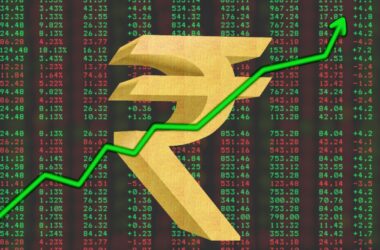
India’s exports have seen a remarkable growth of 14% to reach a record of 770 billion in FY23, according to a recent report by the Ministry of Commerce and Industry. The growth has been attributed to the steady revival of global demand and the government’s export promotion initiatives.
The figures indicate that the export industry is making a strong comeback after being hit hard by the pandemic-induced disruptions last year. In FY22, the exports had reached $290 billion, which was a growth of 42.5% over the previous year. The FY23 figures are a testament to the resilience of India’s export sector, which has been steadily recovering from the pandemic’s impact.
The Ministry of Commerce and Industry’s report highlights that the export of goods from India increased to $349 billion in the first eleven months of FY23, compared to $302 billion in the same period last year. Similarly, the export of services increased from $138 billion to $143 billion in the same period.
The sectors that have been driving this growth are engineering goods, gems and jewellery, chemicals, and pharmaceuticals. Engineering goods continue to be the largest contributor to India’s exports, accounting for over 25% of the total exports. Gems and jewellery are the second-largest contributor, accounting for around 14% of the total exports. Chemicals and pharmaceuticals also contribute significantly to India’s exports.
The report also revealed that India’s exports to the US, China, and the UAE have seen the highest growth in the last year. Exports to the US increased by 28%, while exports to China and the UAE increased by 48% and 31%, respectively. India’s exports to Europe, Japan, and South Korea have also witnessed a strong growth of 28%, 20% and 31% respectively. This indicates that the Indian export sector is increasingly becoming competitive in the global market. The report further said that India has emerged as an important trade partner for many countries around the world due to its low labour cost advantages and the availability of quality products.
The government has been taking various measures to promote exports and increase the country’s share in global trade. The Ministry of Commerce and Industry has launched several initiatives like the Merchandise Exports from India Scheme (MEIS) and the Service Exports from India Scheme (SEIS), which provide incentives to exporters. The government has also been working to improve the ease of doing business and simplifying export procedures.
The recent announcement of the Production-Linked Incentive (PLI) scheme for the manufacturing sector is expected to further boost India’s exports. Under the scheme, the government will provide incentives to companies that manufacture goods domestically and increase their production capacity.
The PLI scheme is aimed at increasing India’s manufacturing capabilities and reducing its dependence on imports. By promoting domestic manufacturing, the government hopes to create more job opportunities and make India a hub for global manufacturing.
The government’s focus on boosting exports is also expected to have a positive impact on India’s overall economic growth. Higher exports lead to increased foreign exchange reserves, which can be used to finance imports and meet other economic needs. It also leads to increased foreign investment, as foreign companies are attracted to countries with a strong export sector.
In conclusion, India’s exports have shown a remarkable growth of 14% to reach a record of 770 billion in FY23, indicating that the country’s export sector is well on its way to recovery. The government’s efforts to promote exports, simplify procedures, and increase manufacturing capabilities are expected to further boost the sector and have a positive impact on the overall economy. With the world gradually recovering from the pandemic, India’s exports are likely to see even higher growth in the coming years.









